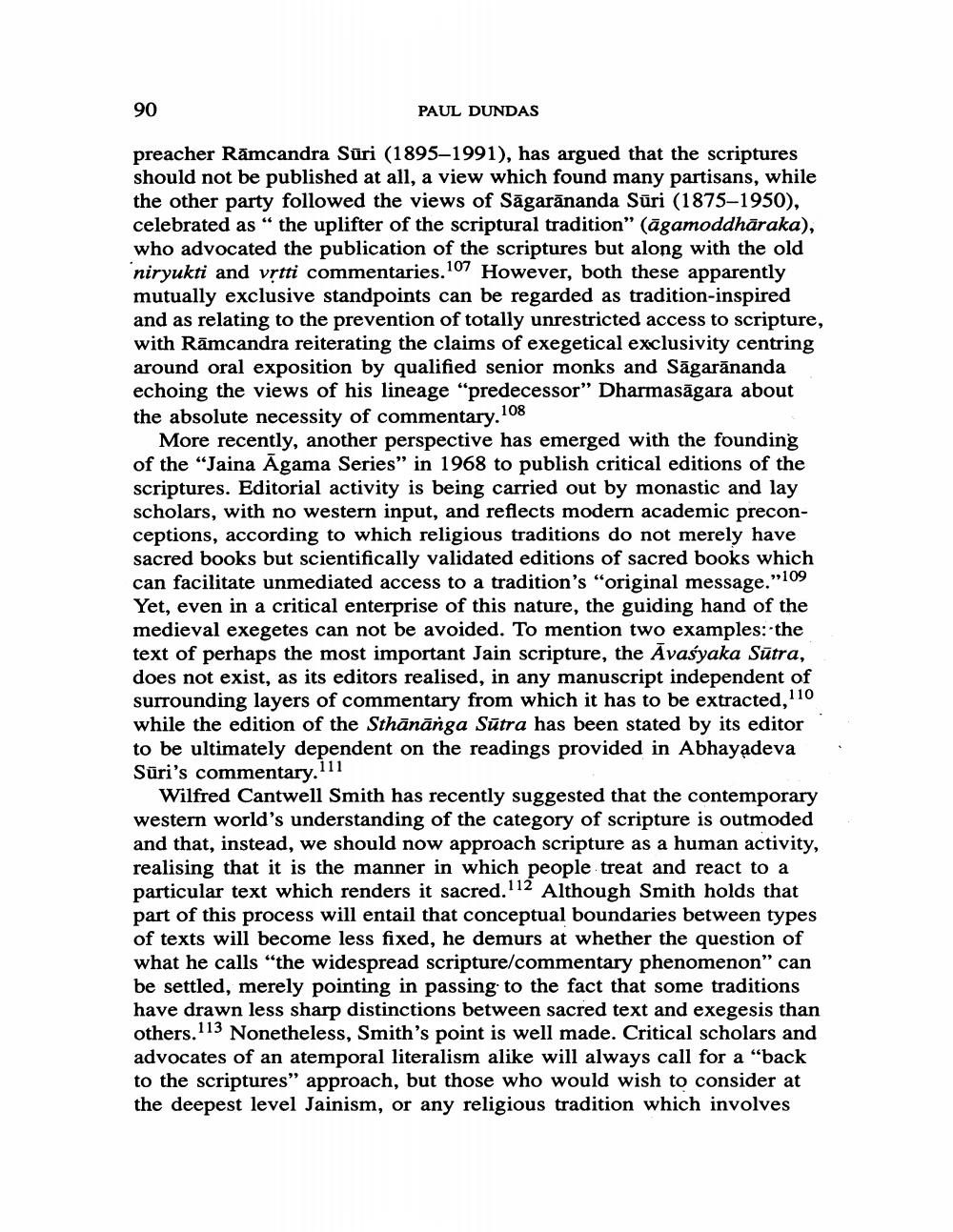________________
90
PAUL DUNDAS
preacher Rāmcandra Sūri (1895–1991), has argued that the scriptures should not be published at all, a view which found many partisans, while the other party followed the views of Sāgarānanda Sūri (1875–1950), celebrated as “the uplifter of the scriptural tradition" (āgamoddhāraka), who advocated the publication of the scriptures but along with the old niryukti and vrtti commentaries. 107 However, both these apparently mutually exclusive standpoints can be regarded as tradition-inspired and as relating to the prevention of totally unrestricted access to scripture, with Rāmcandra reiterating the claims of exegetical exclusivity centring around oral exposition by qualified senior monks and Sāgarānanda echoing the views of his lineage "predecessor" Dharmasāgara about the absolute necessity of commentary.108
More recently, another perspective has emerged with the founding of the "Jaina Agama Series" in 1968 to publish critical editions of the scriptures. Editorial activity is being carried out by monastic and lay scholars, with no western input, and reflects modern academic preconceptions, according to which religious traditions do not merely have sacred books but scientifically validated editions of sacred books which can facilitate unmediated access to a tradition's "original message."109 Yet, even in a critical enterprise of this nature, the guiding hand of the medieval exegetes can not be avoided. To mention two examples: the text of perhaps the most important Jain scripture, the Avasyaka Sūtra, does not exist, as its editors realised, in any manuscript independent of surrounding layers of commentary from which it has to be extracted, 110 while the edition of the Sthānānga Sūtra has been stated by its editor to be ultimately dependent on the readings provided in Abhayadeva Sūri's commentary.111
Wilfred Cantwell Smith has recently suggested that the contemporary western world's understanding of the category of scripture is outmoded and that, instead, we should now approach scripture as a human activity, realising that it is the manner in which people treat and react to a particular text which renders it sacred. 112 Although Smith holds that part of this process will entail that conceptual boundaries between types of texts will become less fixed, he demurs at whether the question of what he calls “the widespread scripture/commentary phenomenon" can be settled, merely pointing in passing to the fact that some traditions have drawn less sharp distinctions between sacred text and exegesis than others. 113 Nonetheless, Smith's point is well made. Critical scholars and advocates of an atemporal literalism alike will always call for a "back to the scriptures" approach, but those who would wish to consider at the deepest level Jainism, or any religious tradition which involves




